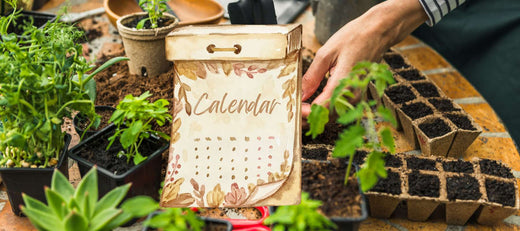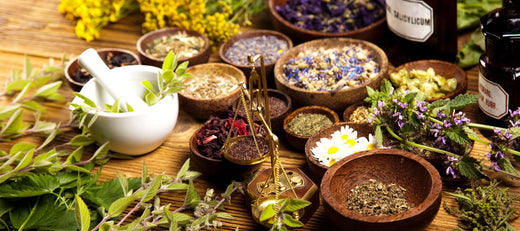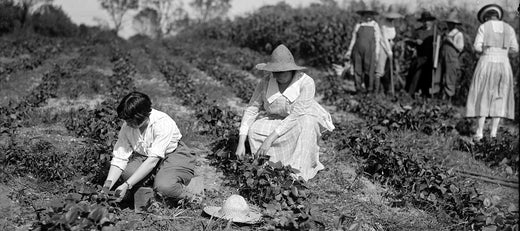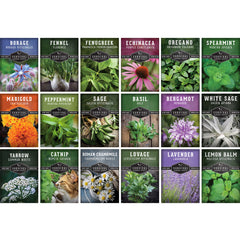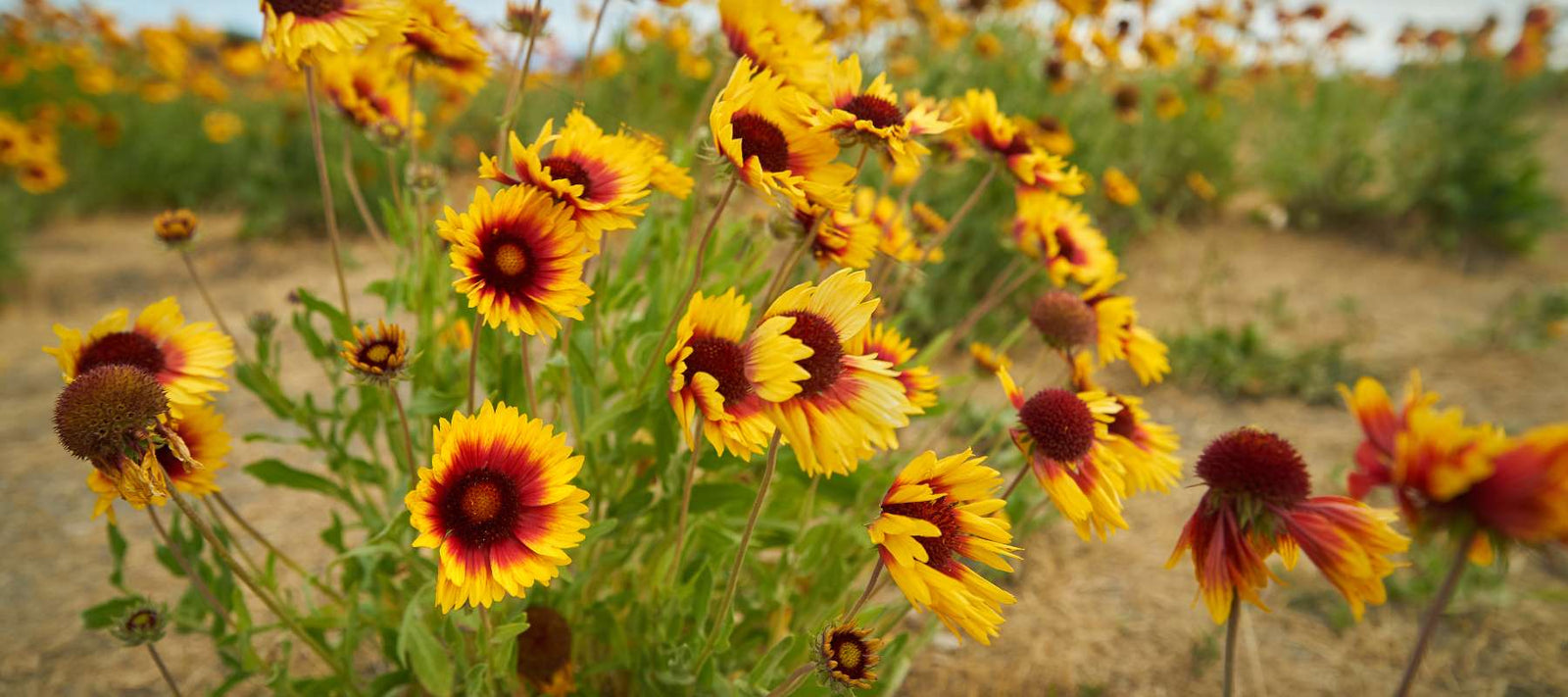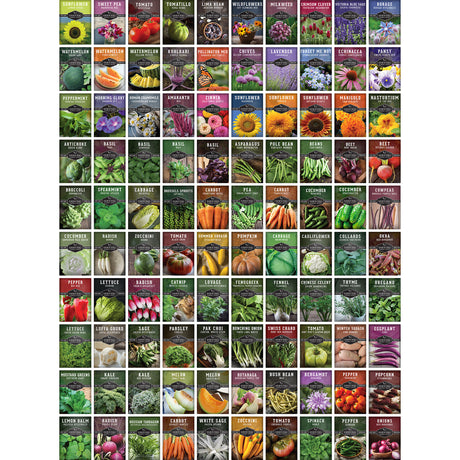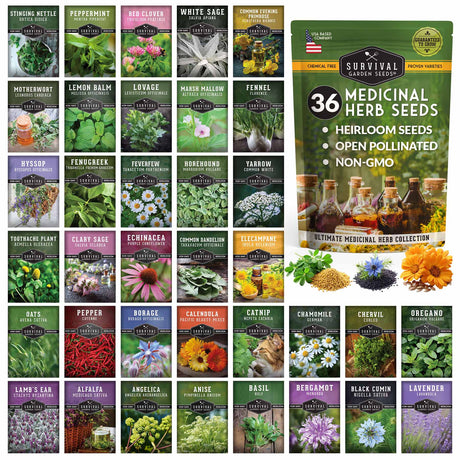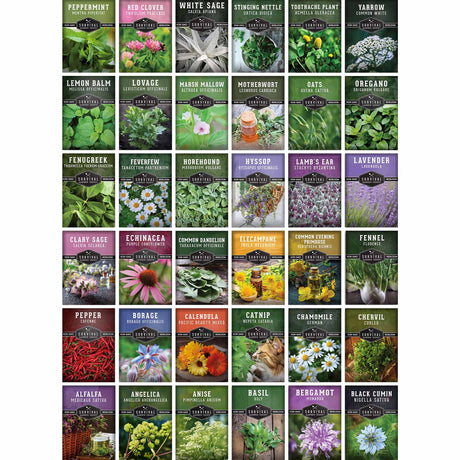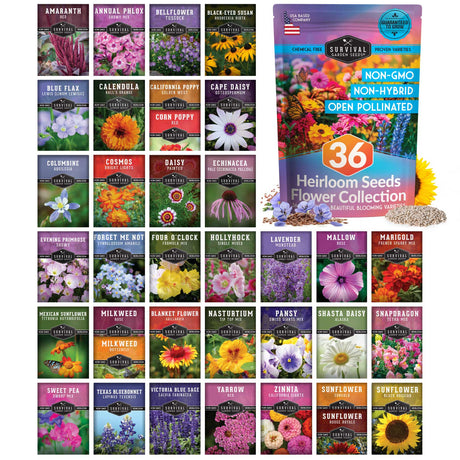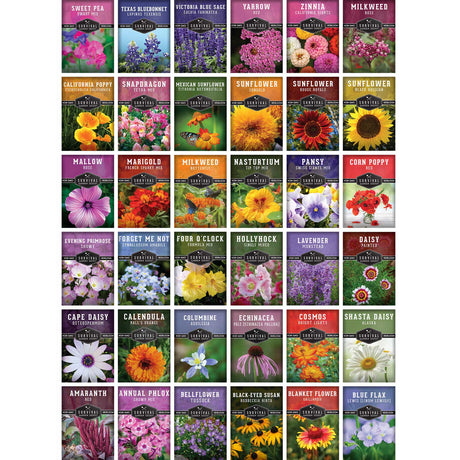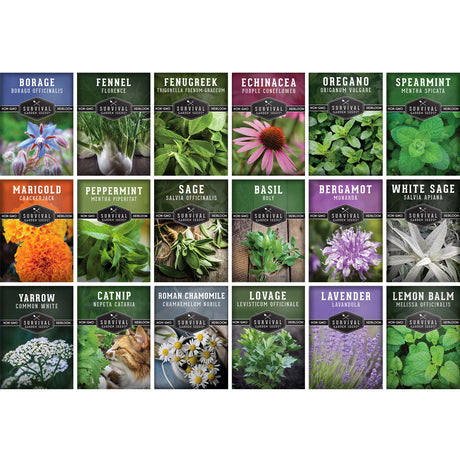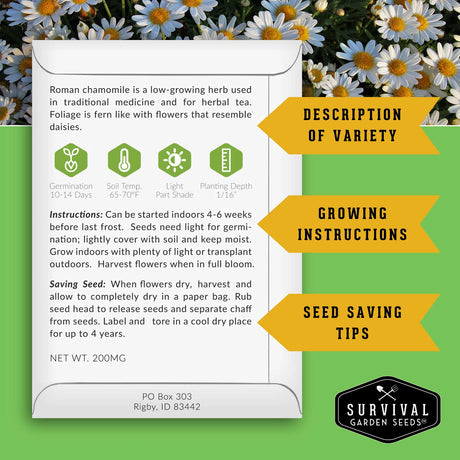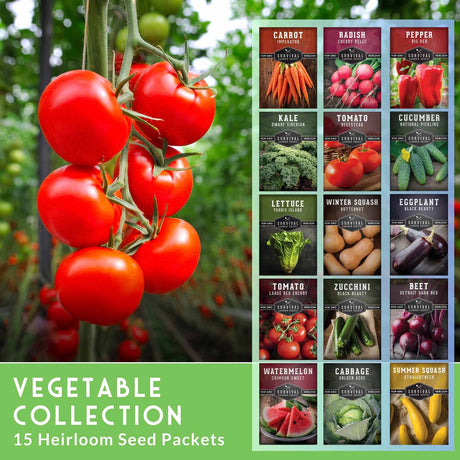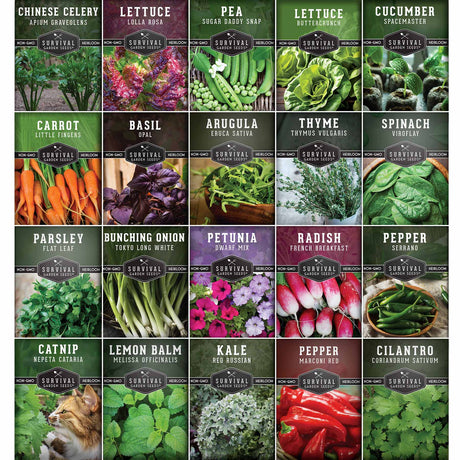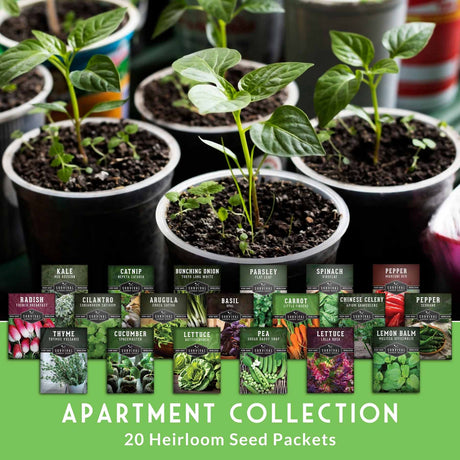Blanketflower (or Blanket Flower) is a long-blooming perennial that will bring brilliant color, rich heritage, and multiple benefits to your garden. Also known as Galliardia, Blanketflower is a native wildflower from the western prairies of the United States that was treasured by Native Americans for its medicinal uses and gets its common name from their colorful blankets. It is valuable for the habitat it provides for pollinators, as a source of food for birds and wildlife, and for prevention of soil erosion. Let’s look at the history of this fiery flower and learn how you can grow blanket flower from seed.
Blanketflower (Gaillardia aristata) is native to central and western North America from south central Canada to California, Utah, Arizona, and New Mexico. You may also see it called fire wheel, sundance, or Indian blanket. Galliardia has daisy-like blooms in shades of red, yellow, white, and peach. It is hardy in zones 3 to 10, drought tolerant, and self-seeds easily.
Uses of Blanketflower
Blanketflower provides habitat and food for many bees, butterflies, moths, and beetles. It is the preferred food of California bighorn sheep in late summer and also serves as fodder for deer, and cattle. It was widely used by many indigenous people for food and medicine. British Columbian tribes used blanketflower as a treatment for tuberculosis, kidney disease, and an analgesic. Tribes in Arizona use the seeds to make seed butter for food.

Galliardia plays an important role in prairie environments because it has a very deep taproot system that helps to prevent soil erosion. That taproot also helps it to be resistant to drought, allowing it to grow in places where other plants might not survive.
How to Grow Blanketflower From Seed
Blanketflower is fairly easy to grow from seed, however, do not expect blooms in the first year. Like many perennial wildflowers, Galliardia focuses all of its energy in the first year to establish a strong root system, stems, and leaves. After the initial establishment period, these plants will flower and produce seeds year after year.
Starting Blanketflower Seeds
Unlike a lot of wildflowers, blanket flower doesn’t require cold stratification for germination. Direct sowing, rather than starting indoors, is the preferred method of planting these seeds. While blanketflower will grow in poor to average soil, it should be well-draining. Avoid heavy, wet clay soil. Once danger of frost is past, choose a spot that gets lots of sunlight and broadcast the seeds on the surface of prepared soil and lightly press in. These seeds need light to germinate. Keep the soil consistently moist (not wet) until germination occurs in about 14 to 20 days.
Growth and Care of Blanketflower

A benefit of native wildflowers is that they are generally resistant to most pests and diseases. The main things that can cause your Galliardia to fail are too much water or not enough sunlight. They can be susceptible to a virus-like disease called aster yellows which can be spread by leaf-hoppers and aphids. If infected with aster yellows, the plants should be destroyed, as they will not recover. If you don’t have enough natural predators like ladybugs to deal with the aphids, an insecticidal soap is recommended.
Blanketflowers have a long bloom season, from early summer well into fall. By dead-heading spent blooms, you can encourage more blooming. Plants in too much shade will not bloom well.
Overwintering Blanketflower
As mentioned previously, blanketflower is hardy in USDA hardiness zones 3 to 10. In cooler zones, you may want to add a good layer of mulch around the plants for some additional protection. You can cut back, even mow the plants, or better yet, leave them alone as the seeds provide food for birds.
Propagating Blanketflower
Galliardia will reseed and spread easily, and you can further propagate blanketflower by dividing well established plants. To divide plants: dig 6 to 8 inches around the plant about a foot deep to release the root ball. Shake and remove dirt from the roots. Gently separate the roots with your fingers and use a sterile knife to cut the root ball into 2 or 3 sections. You can then replant the sections for new plants.
To save blanketflower seeds, cut the stalks once the petals have fallen from the blooms and the seed head is brown and dry. Place the stalks in a paper bag to dry for about 2 weeks, then gently rub the seed heads to separate the seeds from other plant material. Store the seeds in a dry, cool, dark place.
Support Pollinators, Plant Native
Blanketflower's vibrant hues, long blooming season, and adaptability make it a stunning addition to any garden. As a native wildflower, it not only offers visual beauty but also provides crucial support for pollinators, wildlife, and soil health. By choosing to grow blanketflower, you are investing in a resilient, historically rich plant that enhances both the beauty and ecological value of your outdoor space.


